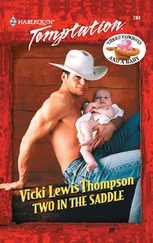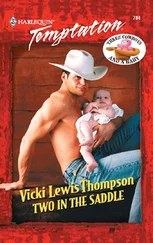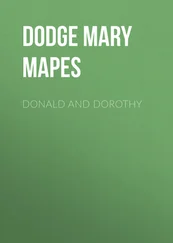Theodore Dodge - Patroclus and Penelope - A Chat in the Saddle
Здесь есть возможность читать онлайн «Theodore Dodge - Patroclus and Penelope - A Chat in the Saddle» — ознакомительный отрывок электронной книги совершенно бесплатно, а после прочтения отрывка купить полную версию. В некоторых случаях можно слушать аудио, скачать через торрент в формате fb2 и присутствует краткое содержание. Жанр: foreign_antique, foreign_prose, на английском языке. Описание произведения, (предисловие) а так же отзывы посетителей доступны на портале библиотеки ЛибКат.
- Название:Patroclus and Penelope: A Chat in the Saddle
- Автор:
- Жанр:
- Год:неизвестен
- ISBN:нет данных
- Рейтинг книги:3 / 5. Голосов: 1
-
Избранное:Добавить в избранное
- Отзывы:
-
Ваша оценка:
- 60
- 1
- 2
- 3
- 4
- 5
Patroclus and Penelope: A Chat in the Saddle: краткое содержание, описание и аннотация
Предлагаем к чтению аннотацию, описание, краткое содержание или предисловие (зависит от того, что написал сам автор книги «Patroclus and Penelope: A Chat in the Saddle»). Если вы не нашли необходимую информацию о книге — напишите в комментариях, мы постараемся отыскать её.
Patroclus and Penelope: A Chat in the Saddle — читать онлайн ознакомительный отрывок
Ниже представлен текст книги, разбитый по страницам. Система сохранения места последней прочитанной страницы, позволяет с удобством читать онлайн бесплатно книгу «Patroclus and Penelope: A Chat in the Saddle», без необходимости каждый раз заново искать на чём Вы остановились. Поставьте закладку, и сможете в любой момент перейти на страницу, на которой закончили чтение.
Интервал:
Закладка:
IV
This running walk or rack, by the way, is one of the most delightful of gaits. Its universal adoption in the South by every one who can buy a racker is due to the roads, which, for many months of the year, are so utterly impassable that you have to pick your way in and out of the woods and fields on either side, and rarely meet a stretch where you can start into a swinging trot. But a horse will fall from a walk into a rack, or vice versa , with the greatest of ease to himself and rider, and if the stretch is but a hundred yards will gain some distance in that short bit of ground. If you have a fifty mile ride over good roads in comfortable weather, perhaps a smart trot, if easy, of course alternating with the walk, is as good a single gait as you can ride. But you need to trot or canter a goodly stretch, not to shorten rein at every dozen rods, for the transition from a walk to either of these gaits or back again, though slight, is still an exertion; while from the walk to the rack and back the change is so imperceptible that one is made conscious of it only by the patter of the horse's feet. Here again, the country's need, roads, and climate have bred a most acceptable gait. But it has made the Southerner forget what an inspiriting thing a swinging twelve-mile trot can be along a smooth and pretty road; and you cannot give away a trotting horse for use in the saddle south of Mason and Dixon. The rack soon grows into the single-foot, which only differs from it in being faster, and the latter is substituted for the trot. To go a six or eight mile gait, holding a full glass of water in the hand, and not to spill a drop, is the test of perfection in the racker. And for a lazy feeling day, or for hot weather, anywhere, it is the acme of comfort. Or it is, indeed, a useful gait in winter, when it is too cold for a clipped horse to walk and your nag has yet not stretched his legs enough to want to go at sharper speed. It must, however, be acknowledged that it is very rare that a horse will rack perfectly as well as trot. He is apt to get the gaits mixed.
A rack is half way between a pace and a trot. In the pace, the two feet of each side move and come down together; in the trot, the two alternate feet do so. In the running walk, or in the single-foot, each hind foot follows its leader at the half interval, no two feet coming to the ground together, but in regular succession, so as to produce just twice as many foot-falls as a trot or a pace. Hence the one , two , three , four , patter of the horse gives to the ear the impression of very great rapidity, when really moving at only half the apparent speed. The result of the step is a swaying, easy back, which you can sit with as much ease as a walk. Rackers will go a six-mile gait, single-footers much faster. I once owned a single-footing mare, who came from Alexander's farm and was sired by Norman, who could single-foot a full mile in three minutes. As a rule, the speed is not much more than half that rate. And either a rack or single-foot is apt to spoil the square trot; or if you break a horse to trot, you will lose the other gaits. A perfect all-day racker or a speedy single-footer can scarcely be aught else.
V
I did not mean to apply that rule to you, Patroclus! We both of us know better. For the exceptional horse can learn to rack or single-foot without detriment to his other paces, if he be not kept upon these gaits too long at any time.
Half a mile ahead of us is the little grass-grown lane, where we can indulge in a canter or a frolicsome gallop. Shall we quicken our speed a trifle? Simply a "Trot, Pat!" and on the second step you fall into as square and level a trot as ever horse could boast. I know how quickly you obey my voice, old boy, and but one step from my word I am ready to catch the first rise, and without the semblance of a jar we are in a full sharp trot. How I love to look over your shoulder, Patroclus, and see your broad, flat knee come swinging up, and showing at every step its bony angles beyond the point of your shoulder; though, indeed, your shoulder is so slanting that the saddle sits well back, and your rider is too old a soldier to lean much to his trot. And you will go six to – I had almost said sixteen – miles an hour at this gait, nor vary an ounce of pressure on your velvety mouth. How is it, Patroclus, that you catch the meaning of my hands so readily?
VI
The fancy of to-day is for the daisy-clipping thoroughbred. And when they do not run to the knife-blade pattern, they may be the finest mounts a man can throw his leg across. But my fancy for the road has always been for the higher stepping half-bred. Granted that on the turf or across a flying country blood will tell. Granted that brilliant knee action is mainly ornamental. Still, in America, the half-bred will average much better in looks, and vastly more satisfactory in hardy service. Where shall we again find the equivalent of the Morgan breed, now all but lost in the desire to get the typical running horse? For saddle work, and the very best of its kind, there was never a finer pattern than the Morgan. Alas, that we have allowed him to disappear! His worth would soon come to the fore in these days of saddle pleasures. The thoroughbred's characteristic is ability to perform prodigies of speed and endurance at exceptional times. But the strong, every-day-in-the-year good performer is usually no more than half-bred, if even that. Moreover, you can find a hundred daisy-clippers for one proud stepper, be he thoroughbred or galloway. There is such a thing as waste of action. No one wants to straddle a black Hanoverian out of a hearse. But the horse who steps high may be as good a stayer as the one who does not, and high action is a beauty which delights men's eyes and opens their purses. Because the long stride of the turf is better for being low, it is not safe to apply this rule to the road.
There are many more worthless brutes among thoroughbreds than among the common herd. While it is easy to acknowledge that the perfect thoroughbred excels all other horses, the fact must also be noted that he is of extremest rarity, and even when found is infrequently up to weight. If we use the word advisedly, only the horse registered in the Stud Book is a thoroughbred. These have no early training whatever, except to allow themselves to be mounted, and to run their best. If they stand the initial test of speed, they are reserved for the turf, and there wholly spoiled for the saddle or for any other purpose of pleasure. If they do not, they are turned adrift, half spoiled in mouth and manners by tricky stable-boys, and may or may not fall into good hands. For one thoroughbred with perfect manners, sound, and up to weight, there are a score of really good half-breds, as near perfection as their owners choose or are able to make them.
What we in America are apt colloquially to call a thoroughbred is only a horse which, in his looks, shows some decided infusion of good blood, or is sired by a well-bred horse. But it is to be remembered that of two horses with an equal strain of pure blood, one may have reverted to a coarse physical type, and the other to the finer. And the one who has inherited the undeniable stamp of the common-bred ancestor may also have inherited from the other side those qualities of constitution, courage, intelligence, and speed, which sum up the value of high English blood. Not one fine-bred horse in one hundred – I speak from the ownership of, and daily personal intimacy for considerable periods with, over fifty good saddle beasts, – has as many of the admirable qualities of pure blood as Patroclus. And yet ( absit omen ), he has a wave in his tail, and though his feet and legs are perfect in shape, and as clean as a colt's, they are far beyond the thoroughbred's in size. He shows that his ancestry runs back both to the desert and the plough. In America, surely, handsome is that handsome does. Let us value good blood for its qualities, not looks, and ride serviceable half-breds, instead of sporting worthless weeds because they approach to the clothes-horse pattern, or have necks like camels.
Читать дальшеИнтервал:
Закладка:
Похожие книги на «Patroclus and Penelope: A Chat in the Saddle»
Представляем Вашему вниманию похожие книги на «Patroclus and Penelope: A Chat in the Saddle» списком для выбора. Мы отобрали схожую по названию и смыслу литературу в надежде предоставить читателям больше вариантов отыскать новые, интересные, ещё непрочитанные произведения.
Обсуждение, отзывы о книге «Patroclus and Penelope: A Chat in the Saddle» и просто собственные мнения читателей. Оставьте ваши комментарии, напишите, что Вы думаете о произведении, его смысле или главных героях. Укажите что конкретно понравилось, а что нет, и почему Вы так считаете.












